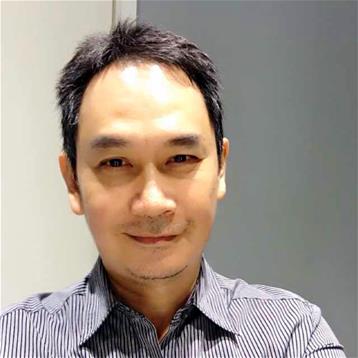Research: Scientists are developing new therapy for chronic wounds
 | By Andy Kwan, Writer, Communications & Outreach |
A team of scientists led by LKCMedicine Professor David Becker is developing accessible and affordable wound-healing patches that will accelerate healing for patients with chronic wounds.

The scientists behind the new treatment (from left): Dr Carine Bonnard, Principal Investigator, SRIS; Dr Pamela Mok, Head, Research and Labs, Celligenics; Dr Ng Yi Zhen, Programme co-lead at Wound Care Innovation for the Tropics Programme, SRIS and Theme Lead for Wounds, A*STAR Skin Research Labs; Prof David Becker, Professor of Tissue Repair & Regeneration at LKCMedicine and Senior Principal Investigator, SRIS
Prof Becker, an expert on tissue repair and regeneration at both LKCMedicine and the Skin Research Institute of Singapore (SRIS), is working with the team at SRIS and local biotech start-up Celligenics to formulate proof-of-concept wound healing patches,
gels, or sprays using a regenerative extract developed by Celligenics.
The regenerative extract is derived from stem cells obtained through Celligenics’ proprietary stem cell technology, which are able to stimulate cell repair. Preliminary data suggests a one-third acceleration in wound closure if treated with this extract – highlighting the extract’s potential in addressing the needs of chronic wounds.
The prototypes are being tested on a first-of-its-kind wound healing platform developed by SRIS, a tripartite partnership between the Agency for Science, Technology and Research (A*STAR), the National Healthcare Group, and NTU. This platform, which was funded as a project under the Wound Care Innovation for the Tropics (WCIT) programme, captures many of the features of human chronic wounds, unlike existing platform technologies.

Researchers from SRIS applying the novel treatment gel onto a wound model (from left): Ms Priscilla Lim, Senior Research Officer and Ms Chin Jiah Shin, Research Assistant from SRIS
Said Prof Becker, “Chronic wounds such as diabetic foot ulcers and venous leg ulcers typically afflict the elderly, who often have poor circulation in their lower limbs. If left untreated, such wounds can lead to amputations, or even death if
bacteria from the wound enters the bloodstream.”
Based on research data, Prof Becker stressed that there are at least four diabetes-related lower leg amputations daily and chronic wounds cost at least USD $216 million worth of healthcare burden in Singapore.
“Currently, dressings for chronic wounds are physical barriers; none of it offers biological actives that stimulate the body’s healing process. Through tapping the expertise of LKCMedicine, SRIS, and Celligenics, we hope to come up with a new therapy that will help stimulate the healing process,” he added.
Mr Kurt Wee, the Chief Executive Officer at Celligenics, a spin-off from A*STAR, said: “Many chronic wound care clinicians in the US and China noted that if they can accelerate healing time by 10 per cent, they would be able to save many patients and reduce healthcare costs and burden significantly. Our technology enables significantly accelerated wound-healing, which means we can reduce the complications of chronic wounds, saving lives and cutting costs for healthcare systems and nations. This collaboration is integral to our plan towards wider clinical developments in Singapore and China.”

Close up of the application of Celligenics’ treatment gel onto a wound model
Fellow scientist, Dr Ng Yi Zhen, a Programme co-lead at Wound Care Innovation for the Tropics Programme at SRIS, and Theme Lead for Wounds at A*STAR Skin Research Labs said: “Wound research is an important focus area in SRIS and we have developed in-house wound model testing capabilities, including a first-of-its-kind perturbed wound model for chronic wounds where wound closure is delayed significantly. We hope this collaboration with the LKCMedicine and Celligenics will lead to better patient health outcomes and anchor Singapore’s spot as a global innovation hub.”
This research project is supported by A*STAR’s Skin innovation Grant.

